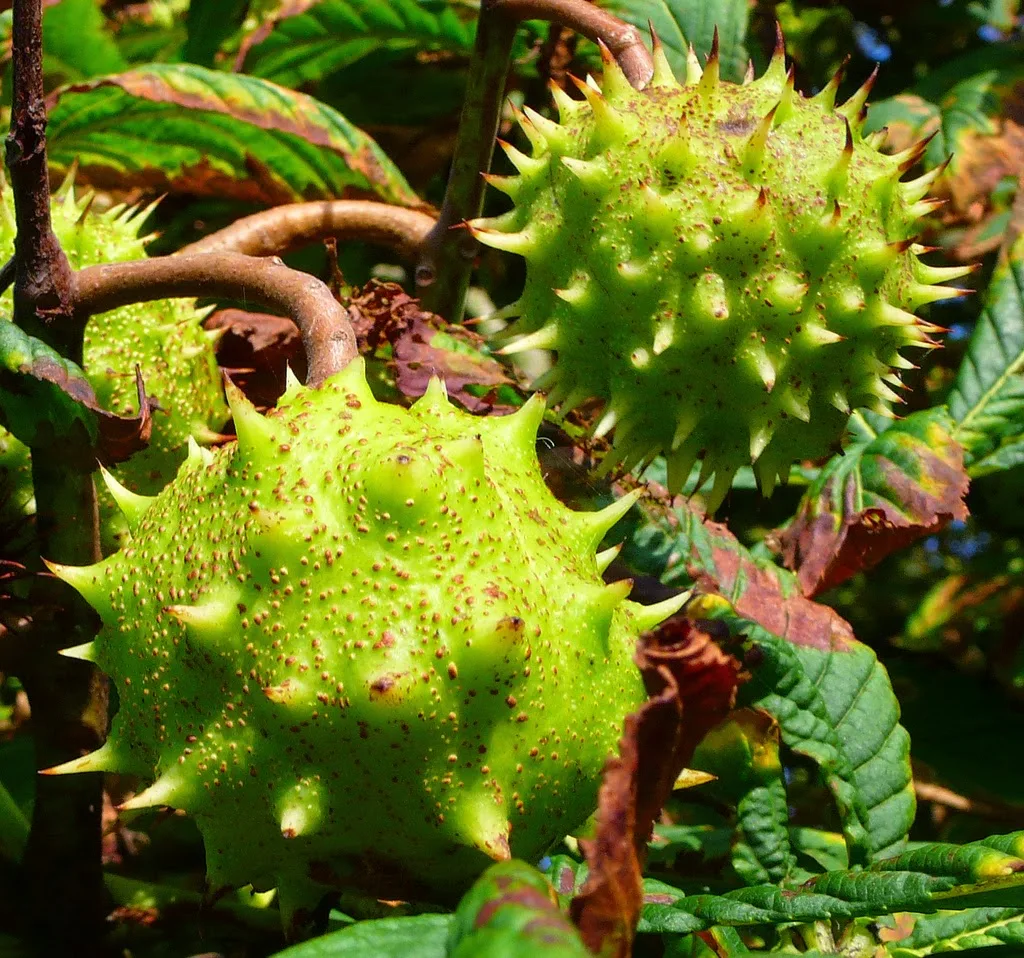By Liliana Usvat
Blog 301-365

It was introduced from Turkey in the late 16th century and widely planted in Canada
Horse chestnuts native to North America are called buckeyes because of their large seeds which resembling the eye of a buck, or male deer.
Medicinal Uses
http://www.permaculture.co.uk/articles/benefits-horse-chestnut
Blog 301-365

Horse Chestnut (Aesculus Hippocastanum)
Horse chestnuts are trees that are 50 to 100 feet tall that spread 40 to 50 feet wide. The trunk can grow to be 3 feet thick encased in dark colored bark. White flowers turn into large brown nuts covered in spiny husks.It was introduced from Turkey in the late 16th century and widely planted in Canada
Horse chestnut trees grow in nearly any soil but seem to prefer a sandy loam. They grow very rapidly into tall straight trees that can reach heights of over 100 ft (approximately 30 m) tall, with widely spreading branches.
The bark is grayish-green or grayish-brown in color, and the tree limbs are thick and have corky, elongated, wart-like eruptions that appear from a distance like ribbing. The interior of horse chestnut bark is pinkish-brown, with fine lines running its length. It is odorless and its taste is very bitter and astringent.
The characteristic horseshoe markings found on the branches are actually the scars from where leaves previously grew. Horse chestnut wood is seldom if ever used for lumber due to its soft and spongy character.
Large leaf and flower buds are clearly visible even during winter months but are encased in a scaly, resinous protective covering that prevents damage from frost or damp. This thick sticky coating melts with the beginning of warm weather in spring, and flowers and leaves appear with remarkable rapidity, usually within three to four weeks.
Horse chestnuts native to North America are called buckeyes because of their large seeds which resembling the eye of a buck, or male deer.
Medicinal Uses
Both the bark and the fruit from horse chestnut trees are used medicinally to strengthen and tone the circulatory system, especially the venous system. It is used both internally and externally to treat varicose veins, phlebitis , and hemorrhoids. Horse chestnut preparations are particularly effective in treating varicose ulcers.
Due to its ability to improve circulation, it is also helpful for the relief of leg cramps. Its bark also has narcotic and fever-reducing properties. A compound known as aescin, which is present in the horse chestnut fruit, is now often added to external creams and preparations used for the treatment of varicose veins , varicose ulcers, bruises, and sports injuries.
Horse chestnut preparations using the seed, bark, twigs, and leaves are all utilized in traditional Chinese medicine.
Chinese herbalists consider horse chestnut to be a part of treatment not only for circulatory problems, but use it as an astringent, as a diuretic, for reduction of edema or swelling, to reduce inflammation, as an expectorant in respiratory problems, and to fight viruses.
Some people apply horse chestnut branch bark to the skin for lupus and skin ulcers.
Horse chestnut seed is used for diarrhea, fever, and enlarged prostate.
In France, an oil extracted from the seeds has been used externally for rheumatism.
The topical preparation has also been used to treat phlebitis.
Most studies have looked at the plant's use internally. But there is some evidence that applying an ointment to the affected area may also help.
Preparations
Horse chestnut bark is removed in the spring in strips 4 or 5 in (10–13 cm) long, about 1 in (2.5 cm) thick and broad.
The fruit of the horse chestnut is gathered in the autumn, when they fall from the tree. Both the bark and the fruit are dried in sunlight or with artificial heat, and are either kept whole or ground to a powder for storage.
A decoction made of 1 or 2 tsp of the dried, pulverized bark or fruit left to simmer for 15 minutes in 1 cup of water can be either taken internally three times a day or used externally as a lotion.
Horse chestnut preparations are also available as tinctures, extracts, capsules, and external ointments and lotions.
Cultivation
 |
The Horse Chestnut is generally raised from the nuts, which are collected in the autumn and sown in the early spring. The nuts should be preserved in sand during the winter, as they may become mouldy and rot.
If steeped in water, they will germinate more quickly. They will grow 3 foot the first summer and require little care, being never injured by the cold of this climate. They thrive in most soils and situations, but do best in a good, sandy loam.
Linkhttp://www.permaculture.co.uk/articles/benefits-horse-chestnut







